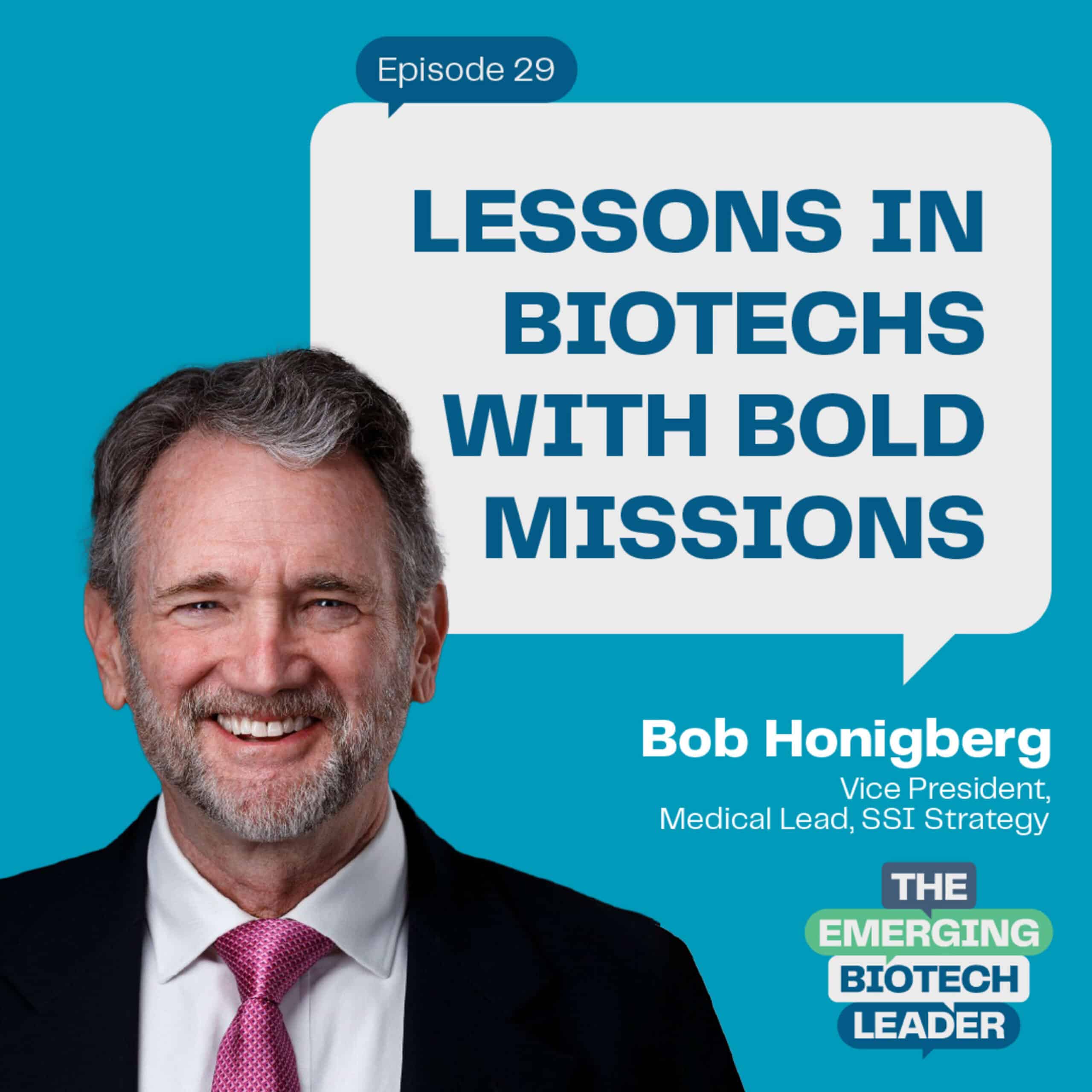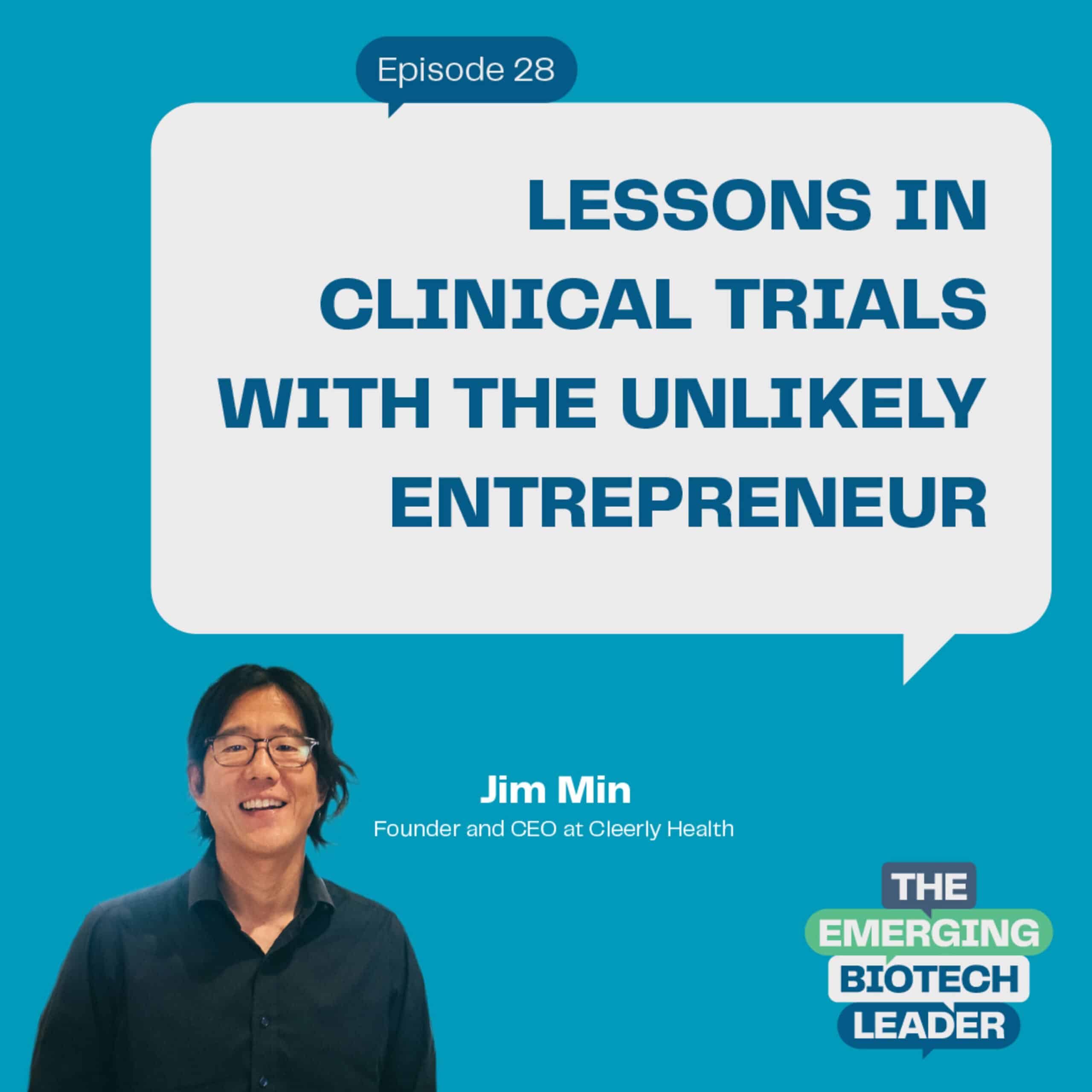
“The good news and the bad news are the same news.” Rik Reppe, VP Digital, Acquis Consulting Group
We are excited to announce a new service, Digital-Led Biotech Strategy, in partnership with Acquis Cortico-X. Through this service, our clients will get access to medical, business, and digital experts to maximize theraputic value through a digital-led approach to solving challenges for biotech companies.
Our mission with each episode of the Emerging Biotech leader is to provide actionable insights and strategic thinking from experts across all facets of biotechnology. And this BONUS EPISODE, with SSI CEO Doug Locke at the host helm again, delivers on that promise.
As we’ve often heard in previous episodes, building and growing a biotech provides no shortage of competing priorities. There’s fundraising, manufacturing, conducting trials, developing a clinical strategy, preparing for CMC readiness, building out a Medical Affairs team, leading the team, and so much more.
Listen to Episode 6 of the Emerging Biotech Leader on Team Agility here.
Utilizing and capitalizing on digital innovation is also an important priority for biotechs in this modern era. And our two esteemed guests, Rishi Thurkal and Rik Reppe of Acquis Cortico-X, are experts on that. At Acquis, Rishi is Head of Life Science Digital Transformation, and Rik is Vice President of Digital Innovation.
If you’ve found yourself flustered by rapid changes across the digital landscape, or you’re currently evaluating how to iterate on your existing digital approach, we invite you to hit play, listen, and read along for highlights.
Doug, Rishi, and Rik take the seemingly daunting world of digital and bring it down to a manageable level with frameworks and guidance to help you and your team capitalize on its power and promise, regardless of your entity’s size.
On The Digital “It” Factor
What sets a biotech up for success in digital? Some might assume bigger budgets, more tools, and a larger team. But Rik says that’s a myth.
“A lot of companies are kind of like, ‘Well, we don’t have resources, we don’t have the technology base to work from. And you’re right, you don’t have those things. That’s the bad news. The good news is that you don’t have those things. Digital is a game about speed and agility.
It’s really hard, not impossible, but it’s hard for a massive entity to be fast and agile. It is comparatively easier for a smaller entity. And so, we can find ways where you do not need to be concerned with the question of: ‘Can I compete?’ You have a competitive advantage due to your size, and you can realize greater gains at a faster rate than those larger companies.”
Once you embrace how to level the playing field is for biotechs in digital, the next line of thinking is around what to prioritize and how to make decisions around digital.
This is where Rik and Doug share more on the upside in digital, given its federated or decentralized framework. Rik specifically says that you don’t want decisions around digital up top in the centralized, hierarchical command and control structure. That said, listen to his advice around guardrails and establishing protocols around collaboration vs. control.
Adding to the conversation, Rishi emphasizes that you need to make sure your digital strategy is aligned with the company strategy.
“What biotechs need to get, and that’s what we try to do, is enable a cohesive strategy to reduce organizational burden and create this seamless intersection of the holistic set of digital solutions being aligned to their therapeutic goals.”
Navigating Change Management With Competing Digital Priorities
What tends to happen to biotechs evaluating their digital innovation? Doug provides this real-world example: the clinical team identifies their specific need for one solution. Medical Affairs casts their eye on their own specific portal. CMC is underfunded, and they need something huge. Everyone has a hand in the pie, so who gets the biggest slice?
To help leaders identify what to do in this type of scenario, Doug turned to Rishi and Rik for their POV on aligning competing priorities. Rishi advises a clear, tactical approach. In addition to having the right team to support digital, it’s imperative to complete a strategic assessment.
“When you do a strategic assessment, do it with a team that has medical expertise, the business expertise, as well as digital expertise to best evaluate the business objectives and goals and thereby, through that evaluation, identify gaps. More importantly, this team also identifies the opportunities that are out there in order to invest in digital capabilities.”
Rishi provides much further food for thought on the strategic assessment process, be prepared to grab a pen and paper or in digital fashion, your laptop or phone to take notes!
Doug, ever the expert host he is, then guides the conversation towards the reality that decisions and determinations are not often as seamless as presented: board and stakeholder buy-in must be achieved first.
On Ensuring Longevity When Investing In Digital
Perhaps you’re a biotech leader excited about digital, but your biggest concern, especially having a therapeutic background is, how long is its shelf-life? Doug asks this very question of Rik.
In his own words, “How do we ensure that the solution–for the six months we’re working on–follows a thesis that’s appropriate for the company?” Adding context to this: Doug specified investing in something today that may be able to last for two years.
Enter the role of the steering committee. Rik elaborates on this further, particularly how consultants can help build them out. In a nutshell: before you get ready for digital and the assessment mentioned above, get clear on what you need as a business. Define the outcomes and with those inputs in mind, a trusted partner, such as Acquis, can uncover the right tools, allocate a determined investment and help you create a living government, most likely in the form of a steering committee.
“These aren’t big cumbersome, hard things. These are steering committees that meet on a weekly basis and are reporting directly back to the leadership of the company to make sure that we stay on point and that discipline A hasn’t drifted, meeting with predictable cadence and frequency.”
On What Makes A Digital Innovation Project Successful
As we wind down our recap, we’ll share Rik’s thoughts on what makes a digital innovation project in biotech successful. His answer is nothing short of eye-opening.
“I’ve done digital in a million places, right? We’ve got folks in our joint team who have done Medical Affairs science, life sciences in a bunch of places. There is an inherent tension between those two. Instead of running from that tension, we want to run at that tension because it takes both.”
In layman’s terms: opposite strengths, when anchored by the business outcomes, are more likely to solve the digital gap from angles that would have never been uncovered if only one school of thought had spearheaded the digital innovation.
As an action item for you and your team, prepare for discussions on both sides. And remember, whether medical or digital, you both have the same end goal: bringing your treatment and brand to market to impact patients.
As we say goodbye, we have a humorous disclaimer to impart to you with. From our pie analogy earlier to a peanut butter cup analogy you’ll hear when you tune in, you might get hungry after listening to this interview. At best, we certainly hope you’ve obtained new viewpoints on digital innovation.
Please let us know how our Podcast is helping you and your team by leaving a review or downloading this episode.
We’ll be back with more next week!


